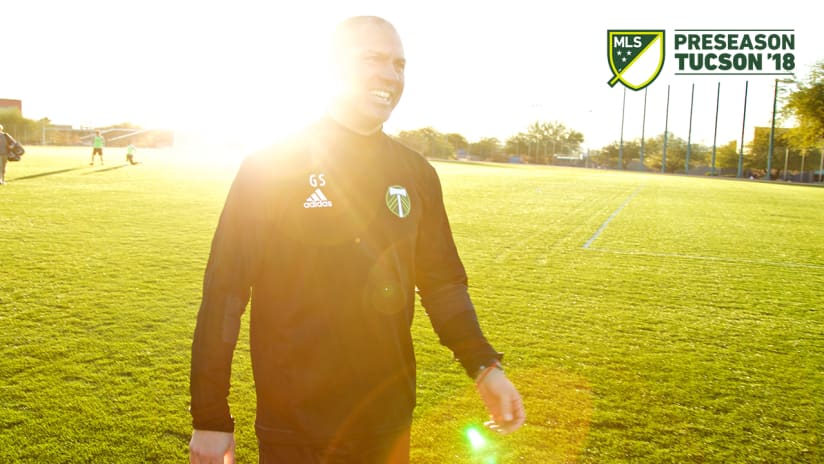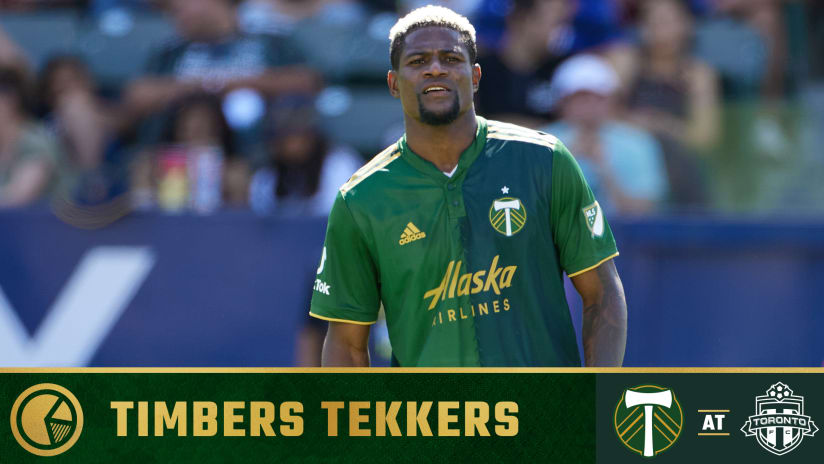TUCSON, Ariz. – It’s halfway through the Portland Timbers’ preseason preparations, and already, head coach Giovanni Savarese is changing things up. The squad he first took charge of two-and-a-half-weeks ago isn’t responding as he’d predicted. It’s only Feb. 8, just over a month shy of the team’s season opener, and already, the first-year coach is having to chart a new course.
It wasn’t a bad thing, though. Before preseason began, Savarese planned three weeks of two-a-day sessions, a system that was new for the club. But witnessing the squad’s start upon their return to Portland, after two exhausting weeks in Tuscon, Savarese had enough. It was time to bring an end to the second sessions.
“The guys looked very good,” Savarese explains, when asked why he changed his plans. “They did so well, they needed some time with their families. We were going to come back [to Tucson] for another 10 days, so they needed to see a little of their kids.”
They’re the type of balances Savarese has had to maintain all preseason. Physical versus tactical. Building versus recovery. Professional and personal. It’s all part of designing a team’s preseason routine, but for a first-year coach, those decisions are more important. They’re not only the first signs of your vision; they’re the first signs of how you view your players, as people.
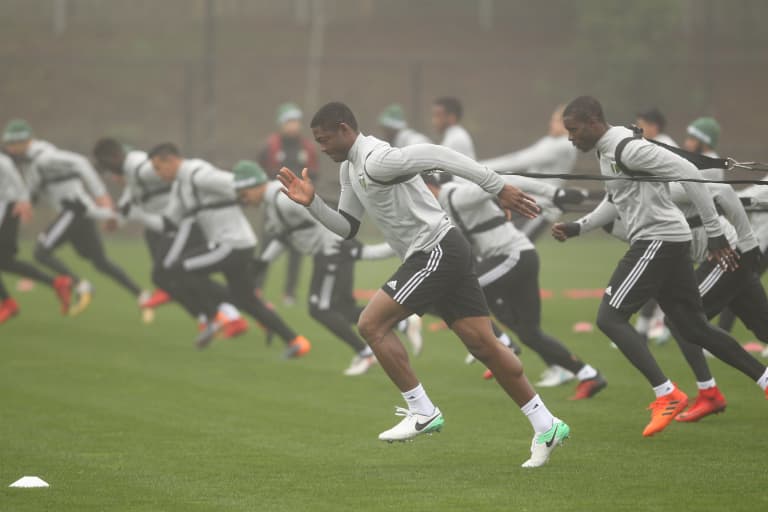
“First, is to build up a base.”
Savarese is explaining his preseason plan; specifically, why the two-a-days? They’re not uncommon, particularly at this point of the MLS season, but for the Timbers, they are new. And for a coach that’s getting his first taste of life in MLS, they reflect his philosophy.
“Second, the more that we work, that time we have with the specifics, we can pass along the formation—the idea of what we want to bring to the team.”
Although people tend to think about double sessions in terms of fitness, there is an educational aspect to the time, as well as a psychological one. If, over three weeks of training, you only practice once a day, you’re giving your team roughly 1,800 minutes together on the field. Two-a-days double that, giving the squad’s new parts, including the coaching staff, twice as much time to bond.
“The more that you work, the better you will be,” Savarese says, acknowledging the risks, “but you have to work in a smart way, because overwork can be something very negative. You have to balance the type of work you do in the morning and the afternoon so it doesn’t become something too heavy on them.”
It’s another balance Savarese has gotten right this preseason. Midfielder Diego Chara came into a camp with a preexisting injury, one he suffered in November. The rest of the squad, however, has been injury free, somewhat remarkable given the veteran-nature of Portland’s core. Asking Liam Ridgewell (33), Diego Valeri (31) and Sebastián Blanco (29) to go from a two-and-a-half month break into double sessions is risky, if you can’t strike the right balance.
“The long break is not a positive thing in regards to preseason,” Savarese concedes, “but it’s a great thing for those that can have a little bit of time away, with the family, and enjoy.” Again, it’s about balance. “You could look at it two different ways, but I think for planning preseason, it’s a lot of time off.”
Minor concerns have forced players to cut short training here and there, but thus far this preseason, the Timbers’ fortunes have gone smoothly. When reminded of the team’s health, Savarese tries to touch wood, but for now, the team is in balance.
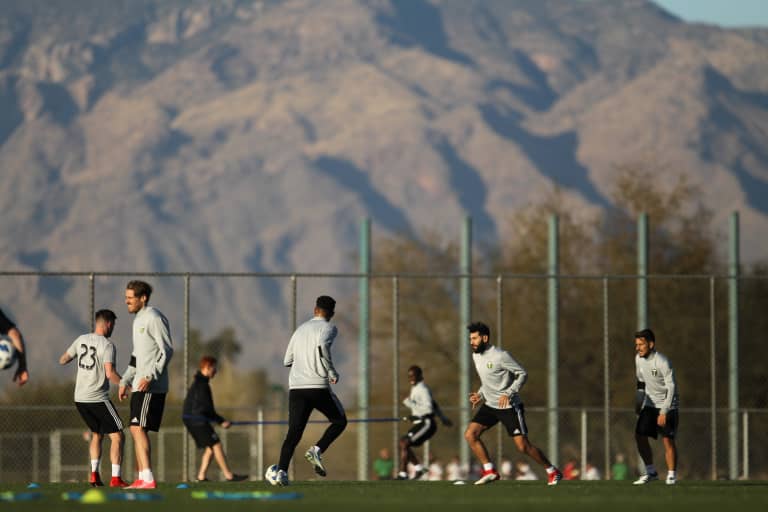
“It’s tiring … I can feel it now,” Valeri says, the 2017 MLS Most Valuable Player having some off from one of the team’s morning sessions. The Thursday before Portland’s return to Arizona is supposed to be another double session. Instead, the second practice has been called off.
“But it’s good. It’s part of the season,” Valeri concedes, when asked about the two-a-days’ effects. Into his thirties, his body is feeling it more than most, even if there’s been a trade-off. “It’s fun stuff, [what] we have been doing, so it makes it easy.”
This is another point of balance of Savarese. If you do plan on engaging your team for 3,600 minutes in three weeks, there is a desire to keep things fresh. That hasn’t been a problem for Portland, though.
“We’re having fun and enjoy it,” Ridgewell says about the double sessions, while the team was still in Portland.
“There are some days that are a little bit heavy …,” Lawrence Olum concedes, “but for most of it, I’m having a good time.”
It’s the consensus you get from almost the entire squad. Are the sessions hard? Of course. That’s the point. But they’ve also been fun.
Savarese deserves the credit for that, as does his staff. While on the field, fitness hasn’t been about running for the sake of running. It’s all ball work: Intense, high-tempo, demanding ball work. Passing drills that hammer home rotations, demanding players move. One- and two-touch drills that force constant motion. They complement the scrimmages that put lessons into practice, and while none of this is unique to Portland, the execution is notable.
Savarese, however, is plotting a new path for the club, and in the process, he’s brought a new voice to the squad.
“What I need from you today is intensity,” Savarese says to the group before the team’s first session back in Portland. He doesn’t belabor the point, though he does say it with conviction.
It’s an appeal to their professionalism, one that’s consistent with the reputation Savarese brought from New York. It’s the type of communication that’s helped his new team buy into the workload.
“They looked at [the preseason program] and said, ‘Woof. What is this?’” Savarese remembers. “And then they said, ‘Ah, I’m having fun. I’m enjoying it. It’s productive. I see the purpose’ … I think they understood why we did it.”
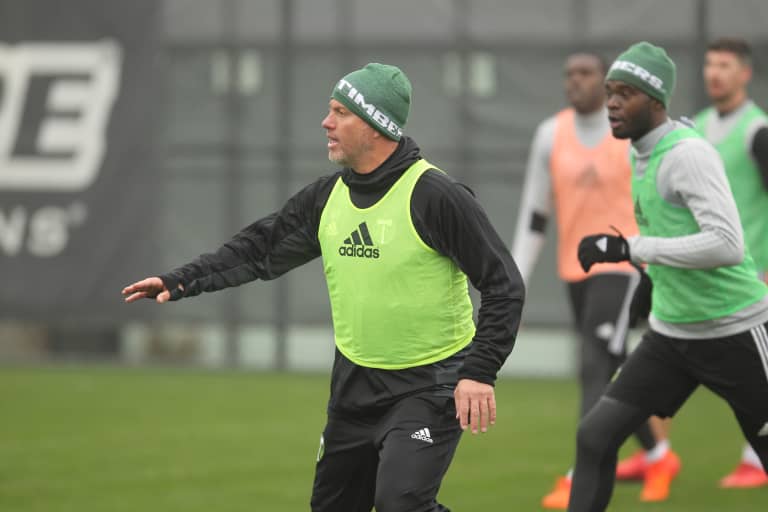
How the coaching staff implemented the new routine is important, too. And if there is one place where the how’s and the why’s come together, it’s Savarese’s coaching style. The choice to go to two-a-days wasn’t just a reflection of the new boss’s approach but an implementation of it. As much as fitness and cohesion have been priorities, players’ relationships with the new staff has been just as important.
Even beyond the two-a-days, Savarese’s feels like a completely new approach. The direct, honest, positive style his New York Cosmos co-workers lauded at Savarese’s previous club has been a constant through his first three weeks with the squad. His willingness to lead by example, too, is evident in his want to jump into drills and work with his players.
“They’ve very interactive,” goalkeeper Jeff Attinella says, asked what it’s like to see Savarese and assistant Carlos Llamosa playing alongside the squad. At one point in Portland, Llamosa executed a perfect slide tackle on a Timbers attacker, reminding the whole squad of the 29 U.S. men’s national team caps he carries into the job.
“They’re hopping in, doing the things that we’re doing,” Attinella says. “It’s kind of like they’re putting in the work, too.”
Having only retired from the game 14 years ago, Savarese (46) is more than capable of keeping up, but the goal here isn’t to rekindle the form that made him a 30-time international for Venezuela. Getting involved with his squad, as well as being more vocal than most during his sessions, gives Saverese the perspective he needs to stay connected.
“I want to be part of it in the sense of feeling the practice,” Savarese explains, “because for me, once I’m connected and I’m in there, I can sense, I can get a feeling of whether we’re doing well, not doing well, if there’s that fluidity. If I’m outside, just hanging out, just waiting and letting everybody do it, I don’t get the same feeling inside of my skin ...
“I find, through my years of coaching, [being active with the team] pushes the players to do better: when you stay on top [of them]; when you stay there; when you continue bringing that energy for them to be able to deliver a higher level of play.”
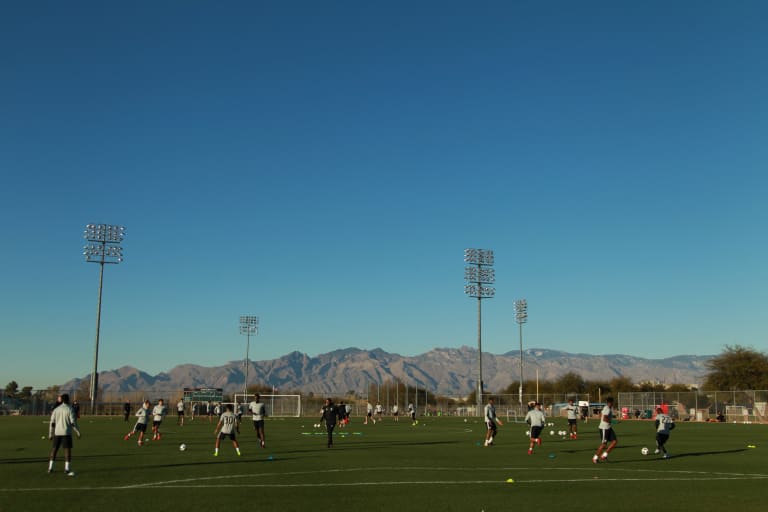
Last Thursday in Portland, it all paid off. The fitness. The connection. The cohesion. It was all producing what Savarese wanted, and ahead of schedule.
So, two days early, he changed the routine. No more two-a-days. Now, it’s back to what the squad had known before.
“It’s responding well,” Ridgewell says, exhaling in relief when asked how his body’s adjustment to the change in routine. “I don’t think I’d done two-a-days for a long time.”
Now on the other end of those double sessions, Ridgewell sees the results.
“There’s a lot of new players, new management, which makes the two-a-days critical – just to spend time with each other,” he explains. “Everyone can get annoyed with each other, a little bit grouchy with each other, having seen each other so much, but it will pan out and do us well for the season.”
That sense of perspective, as well as the relief that two-a-days are over, is exactly why Savarese implemented them - and, why he cut them short.
“The moment they started to do so well, we took away afternoon sessions …,” Saverese says. “They saw the reward after hard work … Once you motivate them and allow them to get a reward from their work, then they see that this is the path. I think that’s very important.”
Very important, too, in building a bond. Whereas two-a-days are often thought of in terms of fitness, there are other ways to get players in shape. You can strap them to exercise bikes and treadmills, usually enduring less injury risk while doing so.
Instead, Savarese bet on balance. The payoff allowed his staff to accelerate everything: the fitness; the tactics; the relationships; the results.
Last week, two days ahead of schedule, Savarese saw it’d all paid off. Now, the routine returns to a new normal.

